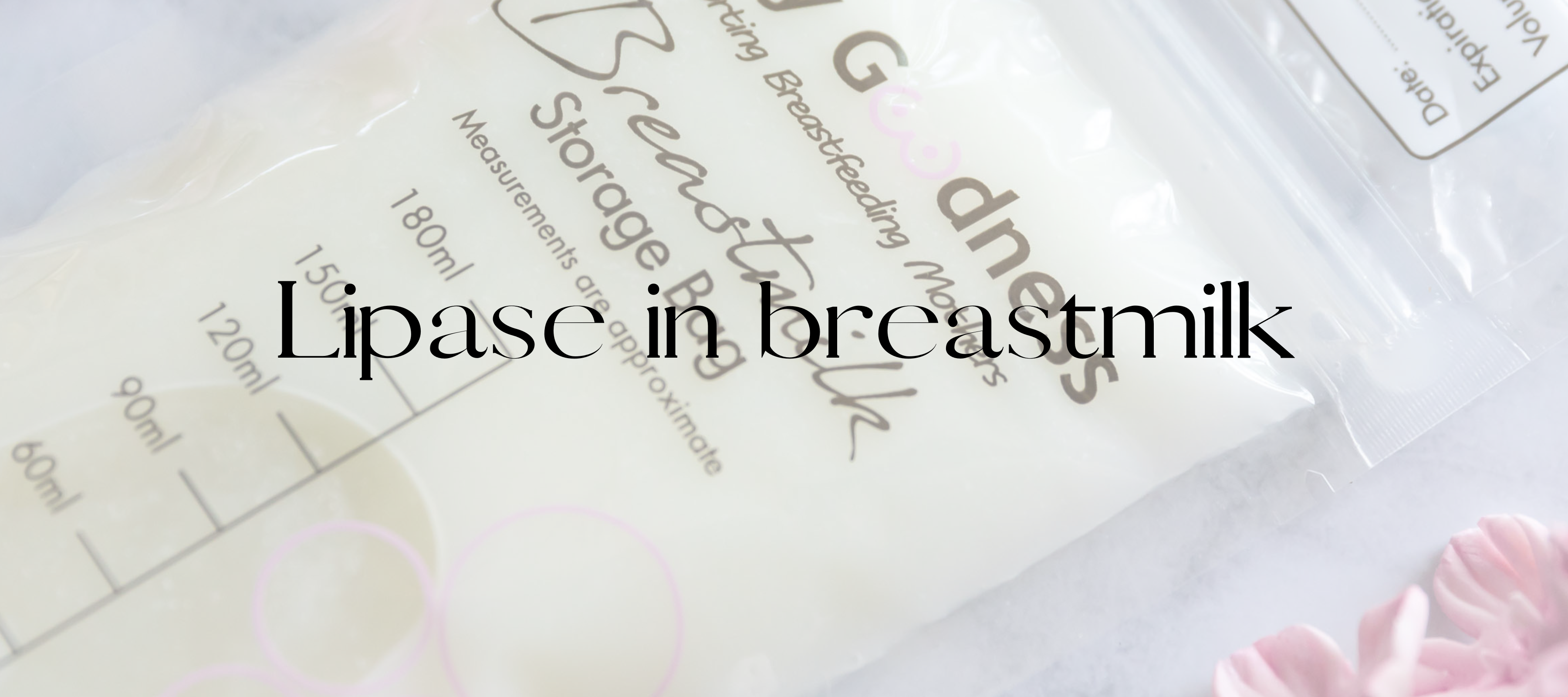Mothers may notice a change in the taste and smell of their stored breastmilk, which is often caused by an enzyme called lipase.
What is lipase in breastmilk?
Lipase naturally occurs in breastmilk and helps break down fat, similar to its role in the infant’s stomach. The composition of breastmilk fat changes constantly during the breastfeeding journey.
Why is lipase important?
Enzymes, such as lipase, are proteins that trigger chemical reactions in the body's cells. They play essential roles for survival, each with specific functions related to particular chemical reactions. Breastmilk contains various enzymes, all crucial for the health and development of a newborn.
Why has your stored breastmilk’s smell changed?
Stored breastmilk undergoes changes due to lipase, resulting in a soapy or metallic smell not found in freshly expressed milk. Despite the smell, lipase has benefits for digestion and immunity. While there is no scientific evidence supporting the idea of high lipase breastmilk from the freezer, the altered smell upon thawing is likely due to the breakdown of fatty acids rather than excessive lipase. This lipolysis process has anti microbial effects preventing the growth of microorganisms in thawed refrigerated milk.
When breastmilk has higher lipase levels, fats break down faster, leading to an unpleasant taste and odour. This change can occur in hours or days, depending on lipase levels. Although the altered taste may lead to rejection by the infant, the nutritional value remains intact. While high lipase in breastmilk is relatively uncommon, it may go unnoticed until milk expression is needed, with a higher chance of recurrence once identified.
What causes high lipase breastmilk?
The exact reason for high lipase levels remains unknown and is not linked to maternal diet. If your infant dislikes the expressed breastmilk, options include scalding the milk by heating to 180 degrees and then cooling it back down to deactivate lipase before storage or mixing it with freshly expressed milk to reduce the strong taste and smell.
References
Eglash, A., Simon, L., Brodribb, W., Reece-Stremtan, S., Noble, L., Brent, N., Bunik, M., Harrel, C., Lawrence, R. A., LeFort, Y., Marinelli, K. A., Rosen-Carole, C., Rothenberg, S., Seo, T., St. Fleur, R., & Young, M. (2017). ABM Clinical Protocol #8: Human Milk Storage Information for Home Use for Full-Term Infants, Revised 2017. Breastfeeding Medicine, 12(7), 390–395. https://doi.org/10.1089/bfm.2017.29047.aje
“High Lipase” Breastmilk - Physician Guide to Breastfeeding. (2021, July 7). Physicianguidetobreastfeeding.org. https://physicianguidetobreastfeeding.org/mythbusters/high-lipase-milk/
High Lipase Milk and Other Breastmilk Issues. (n.d.). La Leche League International. https://llli.org/breastfeeding-info/milk-issues/
Patwal, S. (2021, August 15). High Lipase Milk: Causes, Effects And Tips To Manage It. MomJunction. https://www.momjunction.com/articles/high-lipase-breast-milk-causes-tips_00722158/
Preparing expressed breastmilk | Australian Breastfeeding Association. (n.d.). Www.breastfeeding.asn.au. Retrieved May 12, 2024, from https://www.breastfeeding.asn.au/resources/preparing-ebm
The Enzymes Found in Breast Milk Helps With Your Baby’s Nutrition. (n.d.). Verywell Family. https://www.verywellfamily.com/enzymes-in-breast-milk-431797
What Causes High-Lipase Breast Milk? - ParentData. (2023, September 13). Parentdata.org. https://parentdata.org/high-lipase-breast-milk/



